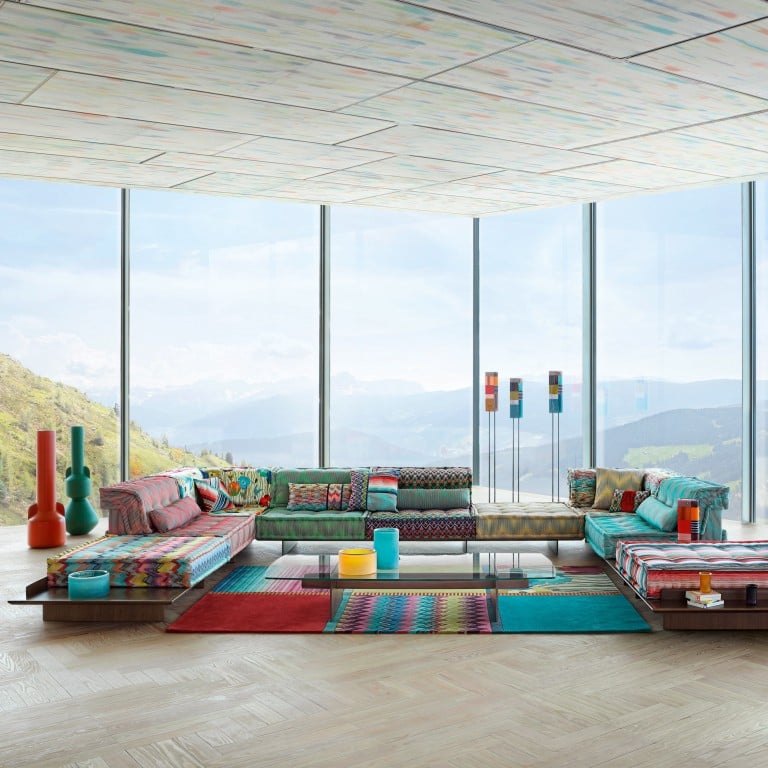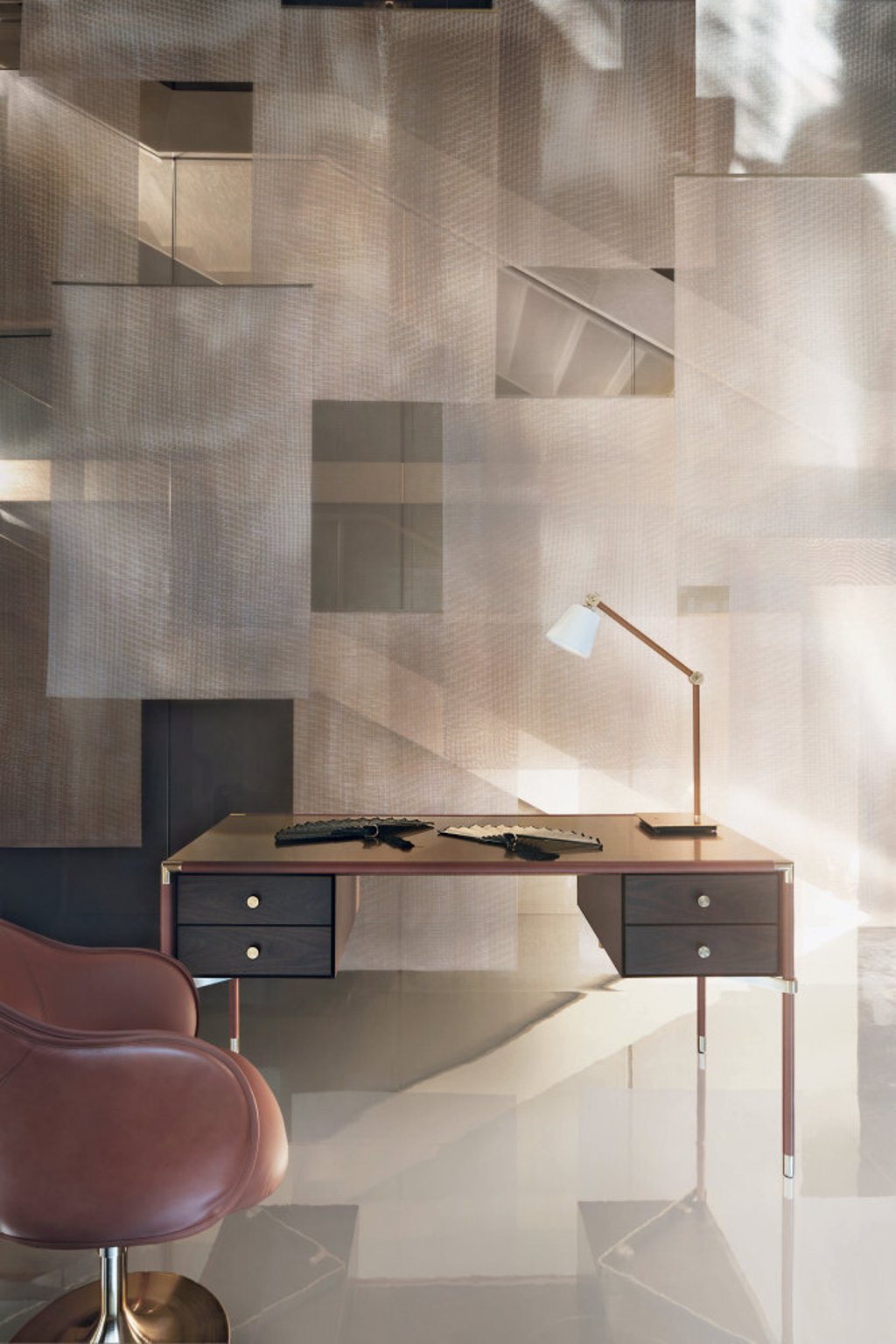Milan Design Week showcased 2022’s most fashionable furniture, with Supersalone featuring homeware from Bulgari, Dior, Fendi, Gucci and Hermès

- The special edition of the Milan Furniture Fair included Armani, Versace, Off-White and Roche Bobois with mahjong sofas by Kenzo Takada, Jean Paul Gaultier and Missoni
- Our Covid-19 ‘new normal’ has blurred the line between home and work, calling for more flexible, easy-to-clean spaces – but there’s still room for creativity
When Milan Design Week got underway in early September, it was a scaled-down affair after a pandemic-induced 18-month delay. Included in the week’s festivities was Supersalone, a special edition of the pacesetting Salone del Mobile (Milan Furniture Fair), which set the tone for design in 2022 and beyond, and served as a reflection of our collective new normal.
That’s not to say that there was less glitz and glamour than in any other year. Major luxury designers were front and centre again in 2021, including Versace, Dior (with its Medallion chair), Off-White (with porcelain maker Ginori), Gucci, Hermès and Bulgari, among others.
Themes and ideas woven through Supersalone – that will be appearing in our homes, offices and hotels soon – included the broader use of natural materials, a focus on sustainability (again), playful shapes that were more often curvaceous than not, a sense of fun rooted in bright colours, and – unsurprisingly – the now-blurry line between home, leisure and office spaces.

“Milan Design Weeks always showcase the avant-garde – and this year was no exception,” says John McLennan, the founder and executive chair of Hong Kong-based interiors retailer Indigo Living.
“Curves and rounded silhouettes continue to be on trend … and there were also plenty of new fabrics made from recycled materials, which is a continuing trend and will no doubt keep growing.”
So what does that mean for consumer interiors and design heading into 2022? We can expect more soft edges in our homes, as well as a fair amount of leather, silk and luxurious metals, and what McLennan calls “ethereal colour combinations and visuals”, or softer tones with punches of bright colour.
But those elements are going to be in wildly reworked spaces, with the lingering pandemic making its presence felt at the Milan show, pointing out the direction for interior spaces in the years ahead.

Design and construction often make dramatic corrections when they are tested by a disruptive event like Covid-19. In the months immediately following the outbreak, Hong Kong-based Peter Lampard, co-founding partner of interdisciplinary studio Deft (Design Eight Five Two), noticed an immediate demand for re-evaluation of space. However, given the reality of Hong Kong homes, he expects that demand is unsustainable, and argues interior layouts are already swinging back to pre-pandemic configurations based on “what we are seeing in these past few weeks, with what the real estate market is supplying and what consumers are actually buying”.
Milan Design Weeks always showcase the avant-garde – and this year was no exception
J Lee Rofkind, principal and regional leader of hospitality at Hok, a global design firm, sees it differently, citing her own residential projects as remaining focused on increasing personal square footage. For her, Covid-19 will have a major impact on design going forward, with the line between office and home environments losing its rigidity, but the main trend to watch is simple: “In a word: space. Thanks to the pandemic, many people are spending more time in their homes than they have in their whole life,” says Rofkind.